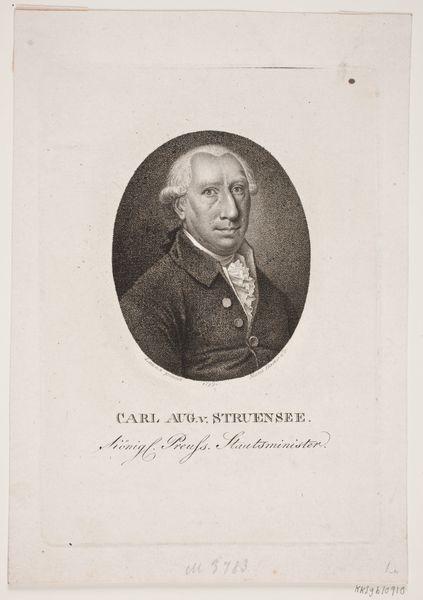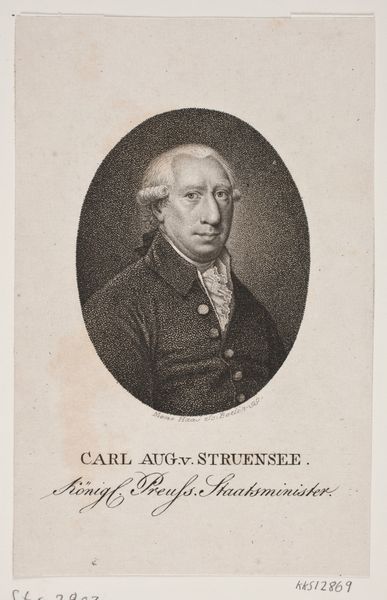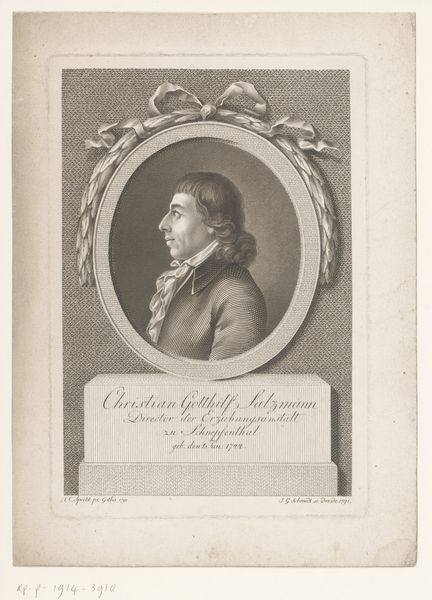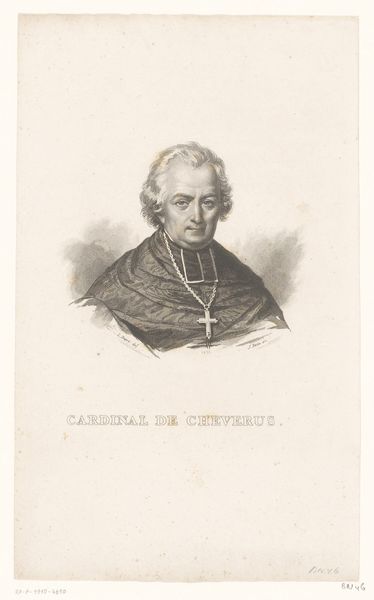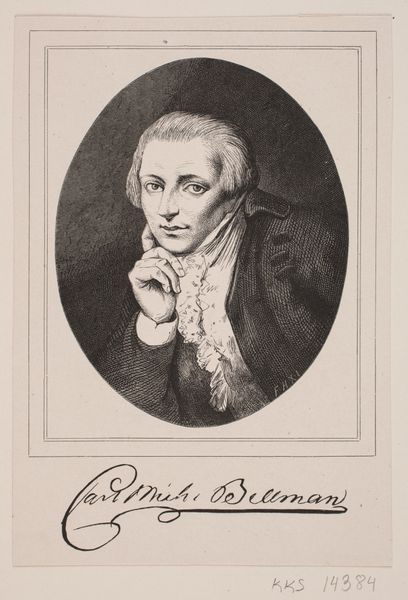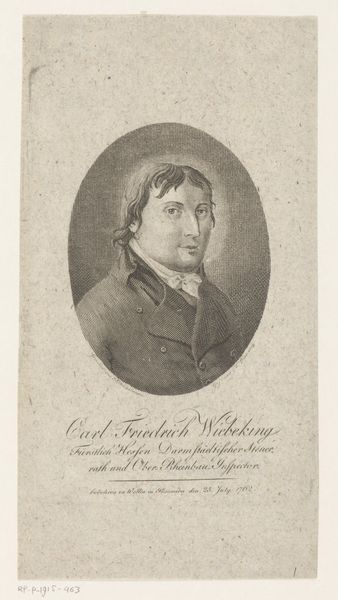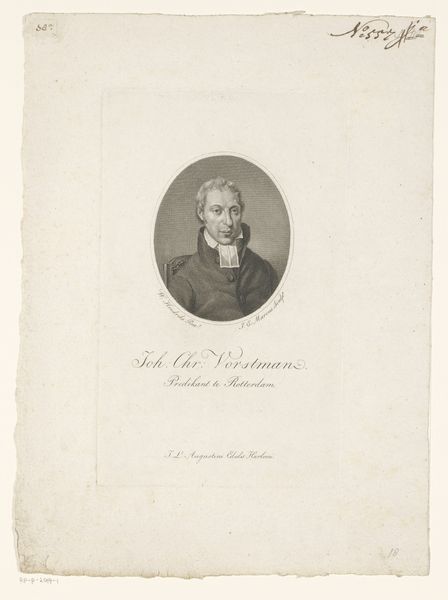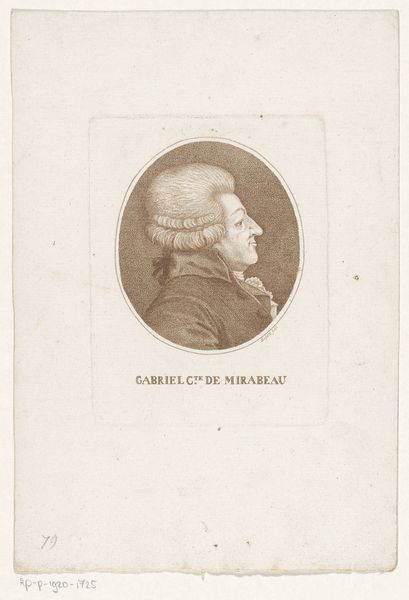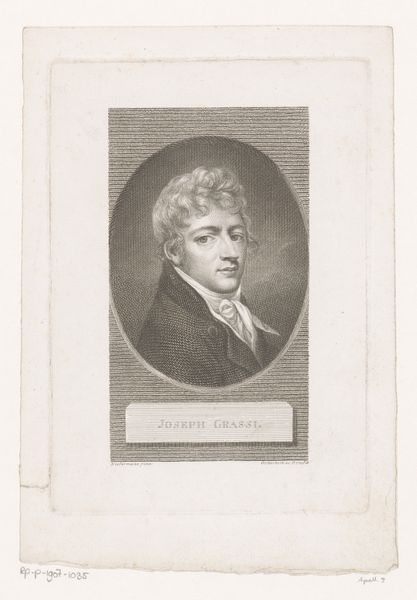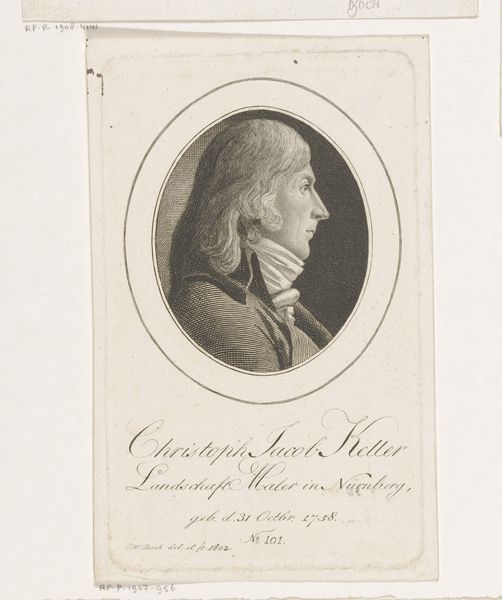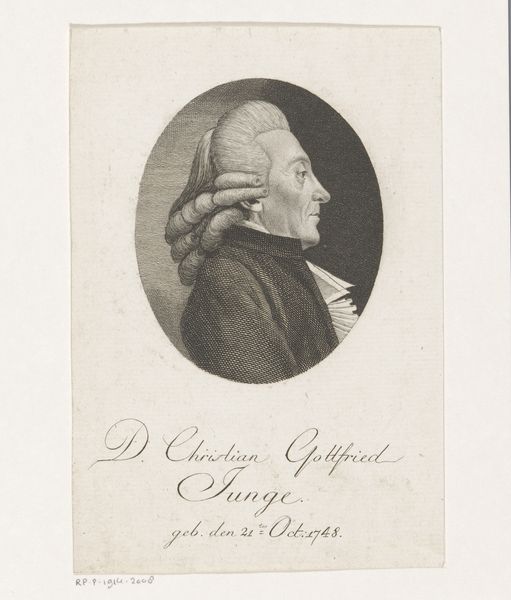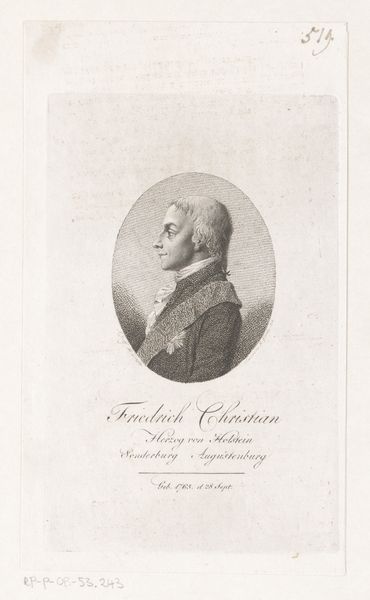
print, engraving
#
portrait
#
pencil drawn
#
neoclacissism
#
light pencil work
# print
#
pencil sketch
#
old engraving style
#
pencil drawing
#
pencil work
#
engraving
#
realism
Dimensions: height 213 mm, width 132 mm
Copyright: Rijks Museum: Open Domain
Editor: This is a portrait of Carl Cleijnmann, made between 1796 and 1813. It's a print, an engraving. It strikes me as quite formal, maybe even a little severe. What symbols do you see at play here? Curator: Well, let's start with the oval frame. It's a very traditional motif in portraiture, isn't it? Encapsulating the subject, presenting them in a controlled, almost idealized way. Think about the inscriptions, the text; in visual culture, text, when combined with image, often dictates a relationship between the viewer and the content. Editor: Right, like a caption solidifying its meaning. It’s not just an image of a man, but an introduction, his title almost. Curator: Precisely. The text serves as an explicit cultural signifier. It grounds the image in a specific time, place, and purpose: "Carl Cleijnmann, Preacher". The formal attire, the composed expression… What might these suggest about the subject and his intended audience? Editor: It looks like he's meant to project authority, maybe even a bit of stoicism. Not much emotion on display. Curator: Indeed. This restraint, typical of Neoclassical aesthetics, emphasizes reason and order. But does it reveal a hidden symbolism within, perhaps aspirations for societal values of morality or order, considering his position? Editor: So, it’s not just about Cleijnmann, but about what he represents, the values he embodies for his community. I see the intention now of these stylistic choices as reinforcing his position. Curator: Exactly. It is a potent distillation of identity, purpose, and cultural values, all embedded within this carefully constructed image. Every line, every element contributes to a narrative of authority. Editor: I’m now considering the lasting impressions. Thanks; I hadn't looked at it that deeply!
Comments
No comments
Be the first to comment and join the conversation on the ultimate creative platform.
